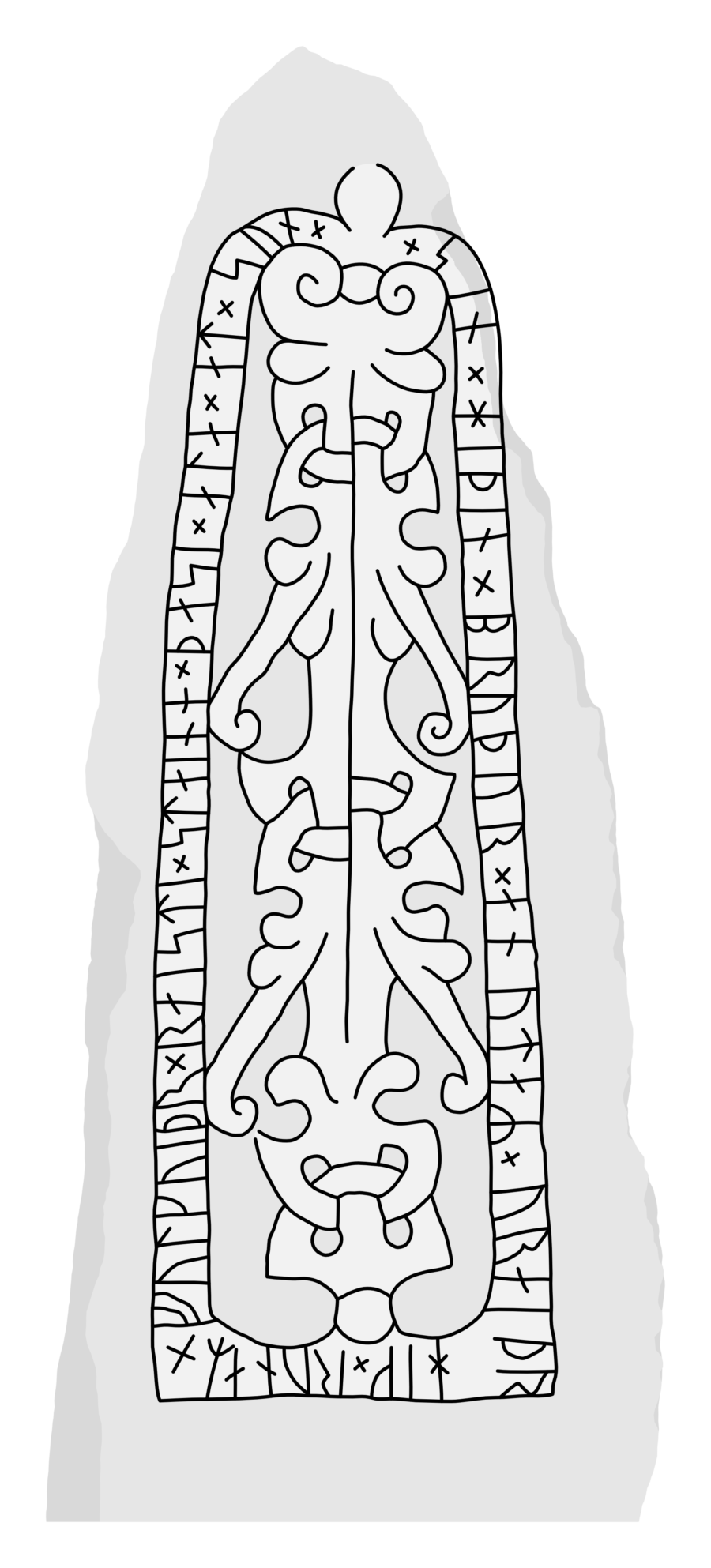
Runestone Vs 13
February 4, 2021
The carving of the stone is in classic Ringerike style. Still, the motif and composition differ from most other runestones. It doesn’t feature any rune-ribbon animals but instead features a tree-like vine ornament in the centre framed by a simple rune-ribbon. The style is contemporary with the runestone style P1 (c. 1010-1040) and Pr 2 (c. 1020-1050).
The inscription is signed by the runemaster Vreiðr/Vred. The stones Sö 8, Sö 21, Sö 318 and U 1009 are also signed by someone by this name, though this is not the same guy.
The granite stone is c. 3,10 m tall (above ground) and 1,28 m wide across the base.
Runic inscription
The rune text begins at the bottom left corner of the inscription.
Runes
× ᚠᚢᛚᚴᚢᛁᚦᚱ × ᚱᛅᛁᛋᛏᛁ × ᛋᛏᛅᛁᚾᛅ × ᚦᛅᛋᛁ × ᛅᛚᛅ × ᛅᛏ × ᛋᚢᚾ × × ᛋᛁᚾ × ᚼᛁᚦᛁᚾ × ᛒᚱᚢᚦᚢᚱ × ᛅᚾᚢᛏᛅᛦ × ᚢᚱᛅᛁᚦᚱ ᚼᛁᚴ × ᚱᚢᚾᛅᚱ
Transliteration
× fulkuiþr × raisti × staina × þasi × ala × at × sun ×× sin × hiþin × bruþur × anutaʀ × uraiþr hik × runaʀ
Old Norse
Folkviðr ræisti stæina þasi alla at sun sinn Heðin, broður AnundaR. Vræiðr hiogg runaR.
English
Folkviðr raised all of these stones in memory of his son Heðinn, Ônundr’s brother. Vreiðr cut the runes.
Notes
The runestone is part of a burial ground used for 700 years also containing five stone ships, ten circles of raised stones, 12 lesser mounds, and the largest burial mound in Sweden, Anundshög, measuring 60 m wide and 12 m tall.
The place-name’s exact origin is unknown, but it’s likely linked to the name on the stone. Though, the runestone is probably a few hundred years younger than the mound.
Vs 13 stand in the line of 14 standing stones along the edge of an old road, together composing one of the largest ‘road monuments’ in Sweden. The monument is located by a route known as Eriksgatan (“Erik’s road”) connecting several important provinces. The newly elected medieval Swedish kings went along this route to have their election confirmed by the local assemblies.
———
Anundshög (Västerås), Västmanland, Sweden
Vs 13